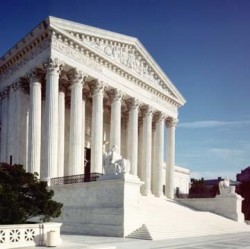When Jack Gross lost his title as claims administration vice president with FBL Financial Group Inc.’s Iowa Farm Bureau divisio n he saw it as a demotion, even though he kept his salary and his responsibilities. Then he started receiving poorer job evaluations. Two years later, Gross was demoted and his job given to a younger woman.
n he saw it as a demotion, even though he kept his salary and his responsibilities. Then he started receiving poorer job evaluations. Two years later, Gross was demoted and his job given to a younger woman.
He sued under the Age Discrimination in Employment Act, which, like Title VII of the Civil Rights Act, prohibits discrimination, but which, unlike Title VII, hasn’t received the same attention from Congress over the years.
Gross won $47,000 from an Iowa jury. The verdict was upheld on appeal. But Thursday, in a historic employment decision, the U.S. Supreme Court overruled the lower courts in Gross v. FBL Financial Services, declaring that it is up to plaintiffs to prove age bias was the reason for an adverse action against them by an employer.
The court’s decision throws out a long-standing rule by which an employee could prevail on an age bias claim if they could prove age was a factor, even if it wasn’t the only one. Once the employee plaintiff established that with evidence, it was up to the employer to show a legitimate reason for taking the action it did.
These so-called “mixed motive” cases reflect such real-world situations as where layoffs fall disproportionally on older workers who tend to have higher pay than younger workers. In that kind of case, replacing older workers with younger ones may be one of multiple reasons considered by the employer. To make a bias case, however, a dismissed worker previously needed only to show that age discrimination was a part of the decision. That shifted the legal burden to the employer who then needed to show that the decision — in this example a layoff — would have been handled the same way regardless of worker age.
The Supreme Court ruling, written by Clarence Thomas and decided on a 5-4 vote, invalidates this two-step process — shifting the burden of proof — and places the entire burden of proof on the employee.
“The burden of persuasion does not shift to the employer even when a plaintiff has produced some evidence that age was one motivating factor in that decision,” Thomas writes in his decision.
Congress amended Title VII when a similar court decision threatened to derail protection against race, religion, and other forms of discrimination. Age protection is not part of Title VII, but was enacted in the Age Discrimination in Employment Act and was not affected by the Title VII amendments.
That point was made in the majority decision. “Unlike Title VII, the ADEA’s text does not provide that a plaintiff may establish discrimination by showing that age was simply a motivating factor,” Thomas writes in the opinion. “We cannot ignore Congress’ decision to amend Title VII’s relevant provisions but not to make similar changes to the ADEA.”
Advocacy groups such as the AARP were quick to denounce the opinion and called on Congress to overrule it with legislation. Business groups, on the other hand, hailed the decision. Without it, said the National Federation of Independent Business, employers would have been subjected “to countless allegations of discrimination.”
Chief Justice John Roberts and Justices Antonin Scalia, Anthony Kennedy, and Samuel Alito joined Thomas in the majority. Justices Stephen Breyer, David Souter, Ruth Bader Ginsburg, and John Paul Stephens dissented.
Foreshadowing the Firefighter Case?
The split, along ideological lines, is a possible foreshadowing of the pending decision in Ricci v. DeStafano, the case of the New Haven firefighters who lost a chance at promotion when their civil service promotional test results were invalidated.
In that case (story here), not one black firefighter scored high enough to be considered for promotion, while 18 of the top 20 scorers were white; two were Latino. The Civil Service Board in New Haven, Connecticut, which conducted the test, refused to certify the results, meaning no promotions were given. The basis for that decision lies in the disparate impact test of Title VII.
While in the Gross v. FBL Financial Services case the issue was age discrimination and the ADEA, the court’s conservatives have leaned toward making discrimination harder to establish. The Gross decision continues that trend and suggests Ricci could be decided in favor of the firefighters by the same 5-4 majority.
Of course, that’s just tea-leaf reading. The court has other options, including sending the case back to a lower court with specific instructions, should it wish to duck a decision in that emotionally charged case, complicated now by the nomination of Sonia Sotomayor to the Supreme Court. She was one of three judges to sign off on the two-paragraph appeals court decision upholding the lower court’s ruling in favor of New Haven.